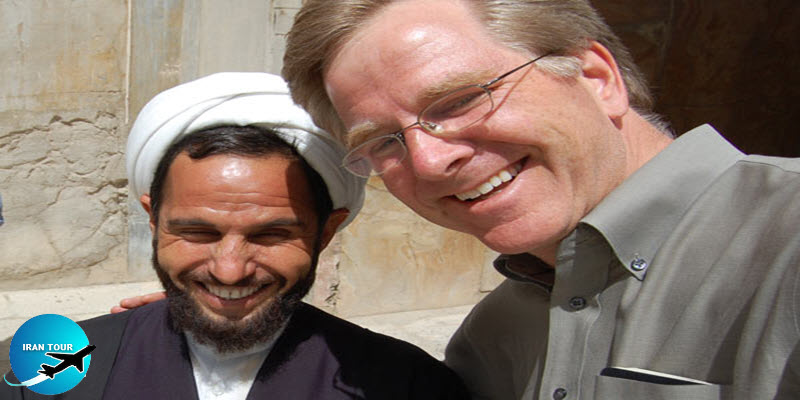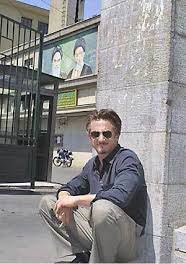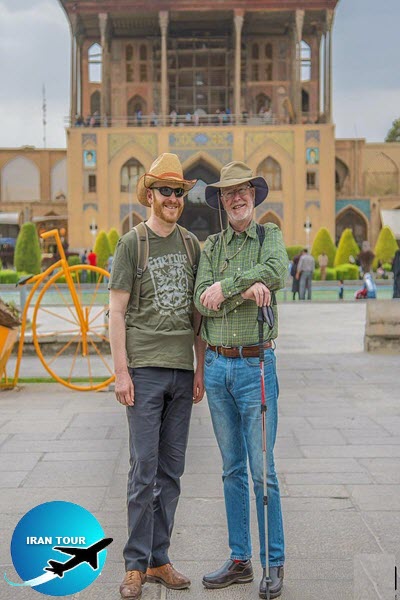Copyright 2020 - 2021 irantour.tours all right reserved
Designed by Behsazanhost
Famous Travelers to Esfahan
Famous Travelers to Esfahan
Fortunately for a researcher, Esfahan has always remained a halting point for any traveler. A succession of voyagers, drawn to the country either by commercial interests or by a taste for exploration, has left valuable accounts of Esfahan's glorious past. The first comprehensive picture of the city is given by Naser Khosrow (10041088), the celebrated Persian poet, philosopher, and Ismailite propagandist. After his visit to Esfahan in 1052, he wrote in Safar-Nameh (“Travelogue”): “I have never seen, in any place where Persian is spoken, a finer, larger and more prosperous city than Esfahan. He was also the first to have mentioned the Congregational Mosque of Esfahan (pp112-120). Ibn Batutta (1304-1368?), the great Moor of Tangier, was an Islamic scholar and jurisprudent. However, he is best known as a traveler and explorer, whose detailed accounts document his travels and excursions over a period of almost thirty years. These journeys covered more than 100,000 km throughout the entire Islamic world and beyond, extending from West Africa and South Europe in the west, to Southeast Asia and China in the east, a distance readily surpassing that of his predecessors and his near-contemporary Marco Polo. He visited Esfahan in about 1330 and afterward wrote: “Esfahan is one of the largest and fairest of cities, but most of it is now in ruins, as a result of the feud between Sunnites and Shiites. Its people are good looking, with clear white skins tinged with red, exceedingly brave, generous, and always trying to outdo one another in procuring luxurious viands."
The next brilliant accounts of Esfahan belong to the Venice ambassadors Josafa Barbaro and Ambrogio Contarini, who visited the city during the Turkman rule. They wrote: “Esfahan seems to be a very convenient city, and is situated in a plain abounding with all kinds of provisions." They found the general cost of living high, but the price of bread reasonable. The people were friendly and seemed to like the Christians. They added: "While we were in Persia, we did not suffer a single outrage."
 |
The seventeenth century was the great era of additions to the literature of travel. In 1617, from Italy to Esfahan came a wealthy Roman patrician, Pietro Della Valle (1586-1652) with the Nestorian wife he had married in Baghdad. They remained for nearly five years in Persia, having spent in Esfahan a good part of that time. In the summer of 1618, Della Valle joined Shah Abbas in a campaign in northern Persia, and was well received at court and treated as the shah's guest. Della Valle left a detailed and faithful account of the Safavid capital in a series of letters addressed to his friend In 1619, Don Garcia Silva Figueroa called Esfahan "the noblest city of this (Persian] kingdom." The accounts of two European travelers to Iran in the 17th century, Chardin and Tavernier, are recognized as the richest Western sources of knowledge of late Safavid Iran.
Jean-Baptiste Tavernier (1605-1689) was a famous French traveler, and pioneer of trade with India. During the years of 1632-1668, he made six trips to the Eastern lands. He was more than once in Esfahan - for the first time in 1632 when Shah Abbas's successor, Shah Safi, was on the throne, and for the last time in 1664 during the reign of Shah Abbas II. On the latter journey, he was accompanied by André Daulier-Déslandes, who also left an account of his travels. Tavernier had neither the equipment nor the tastes of a scientific traveler, but in all that referred to commerce, his knowledge was vast and could not fail to be of much public service. His narrative is much confused by his plan of often deserting the chronological order and giving instead notes from various journeys about certain routes. However, although Tavernier's book of Six Voyages has been much criticized, it still retains its value, both for its independence and general freedom from exaggeration.
 |
Chevalier Jean Chardin (Sir John Chardin) (1643-1713) was a Frenchman by birth but was driven from his native country because he was a Huguenot. He crossed over to England and became a court jeweler to King Charles II, by whom he was knighted. He afterward went to Esfahan, where he spent, in all, some ten years. During this time, he became intimately familiar with the city, its markets, shops, and workplaces; he was invited into people's houses and entertained; he visited gardens and participated in hunts; his knowledge of court affairs was extensive; and he traveled hundreds of miles, all over the country, visiting other towns and villages. In 1666, he decided to collect material for a full description of Esfahan and its buildings. Ten years later, Chardin sorted and arranged the large amount of the material that he had accumulated, and the resultant work constitutes volume VIII of the ten-volume edition of his Travels. It is the most important survey of Esfahan in the 17th century. Chardin devotes much space to the sights, as well as to many things that have amazed or amused him. In a wine tavern, he saw the following inscription: "Life is one continual intoxication; the pleasure passes but the headache remains”. In a palace, he noticed a number of verses, one of which read: “When I was about to marry, the married folks were dumb. Now that I am married, those who are going to marry are deaf”.
Although there are occasional lapses in his books, Chardin is generally trusted as a reliable witness, and his work has been used as a source for diverse studies on Safavid history, government, economics, anthropology, religion, art, and culture. Ambrosio Bembo arrived in Iran in June 1674, after having traveled in Ceylon and India for two years. During his stay in Esfahan, he met the French painter G. G. Grelot, a competent draftsman whom Chardin had hired to illustrate his own travels in Iran. Despite his considerable ability as a writer Chardin was not a good employer, and Grelot eagerly entered Bembo's service. Bembo's book is titled Travels and journal through part of Asia, during nearly four years, undertaken by me, Ambrosio Bembo, a Venetian Noble. Of the forty-seven illustrations in this Journal, seven were used by Chardin in his Travels, while the other forty have never been published. Eleven of Grelot's line drawings dealt with Esfahan.
Among the 17th-century adventurers were the two brothers, Sir Antony Shir ley (1565-1635) and Sir Robert Shirley (1581-1628). In 1598, Antony, then a man in his early thirties with a dozen or more years of buccaneering and adventure behind him, left Venice for Persia with his younger brother Robert, a youth of about seventeen. The objects of their journey were to urge Shah Abbas to ally himself with the Christian princes against the Ottoman Turk, and to reopen trade relations with England. At Qazvin, the two brothers were received by Shah Abbas, who sent Anthony as his ambassador to various courts of Europe. Robert remained in Iran, where he helped the shah to reorganize the army. In 1615, Shah Abbas dispatched him to Europe. In London, Shirley quarreled with a Persian envoy of the Shah, and in 1627 the two men were sent back to Iran in separate ships. Robert was accompanied by an English ambassador, Sir Dodmore Cotton, and Sir Thomas Herbert. The victim of conspiracies at the Persian court, Robert was coolly received by Shah Abbas. Bit
 |
There were also numerous English, French, German, Dutch, Spanish, and Italian visitors to Esfahan, who have left the accounts of the splendors of the Safavid capital. James Morrier, one of the most famous 19th-century travelers to Esfahan, was an Englishman brought up in Constantinople. As a diplomat, he was attached to the two embassies to Iran and spent overall six years there.
The first illustrated books on Iran were published at the beginning of the 19th century. In 1838, French painter Texier alone, and in 1840, French painter Eugene Flandin, accompanied by his fellow traveler, an architect Pascal Coste, came to Iran assigned by the French government. Altogether, they pictured the Iranian historical buildings of that time in relentless detail. Caspar Drouvill, supported by the Russian court, came to Iran in 1812. During this trip, he prepared a remarkable collection of watercolors, devoted to Iranian people, and published it on return to St. Petersburg. It came out in 1820 and was entitled Voyage en Perse.
European political and military advisors at the Qajar court who were skillful in painting or photography also left colorful accounts of their stay in Iran. Among them are Sir Robert Ker Porter, English diplomat and artist (the year of residence in Iran - 1814); Soltikoff, Russian prince and painter (1850); Colombari, Italian military instructor and artist (1833-48); Luigi Pesce, Italian military instructor and photographer (1848-58); and Luigi Mentabone, Italian photographer, who came to Iran together with the Italian diplomatic mission in 1862. Some of the most sumptuous and finely illustrated volumes of the 19th-century Iran were collected by French archaeologist Marcel Dieulafoy and his wife Jane Dieulafoy.
Among the 19th and early 20th-century accounts, the two-volume book Persia and the Persian Question of Lord George Curzon (1859-1925) occupies a special place. No previous work on Iran had ever approached, nor has any subsequent one surpassed this monumental book. George Curzon was born in 1859 into the family of Baron Curzon. He proved to be a brilliant student and an ambitious man. He was perhaps the most important British politician in modern times who failed in his quest to become a prime minister. Curzon was a Viceroy of India, and he is chiefly remembered today for extending Western knowledge of Indian art, archeology, and literature. He was an active traveler and visited Ceylon, Afghanistan, Iran, Turkistan, China, Japan, and Korea. These travels provided material for a series of books such as Russia in Central Asia (1889), Persia and the Persian Question (1892), and Problems of the Far East (1894).
Robert Byron was one of those bright young travelers who set off from the British Isles to the world's most distant corners in the period between the two World Wars. Together with Christopher Sykes, he visited Esfahan in 1937. In his brilliant The Road to Oxiana, he wrote: "The beauty of Esfahan steals on the mind unawares. You drive about, under avenues of white tree-trunks and canopies of shining twigs; past domes of turquoise and spring yellow in a sky of liquid violet-blue; along the river patched with twisting shoals, catching that blue in its muddy silver, and lined with feathery groves where the sap calls; across bridges of pale toffee brick, tier on tier of arches breaking into piled pavilions; overlooked by lilac mountains, by the Kuh-i-Sufi [the Soffeh Mountain shaped like Punch's hump and by other ranges receding to a line of snowy surf; and before you know how Esfahan has become indelible, has insinuated its image into that gallery of places which everyone privately treasures."
- Details
- Category: Esfahan Tourism